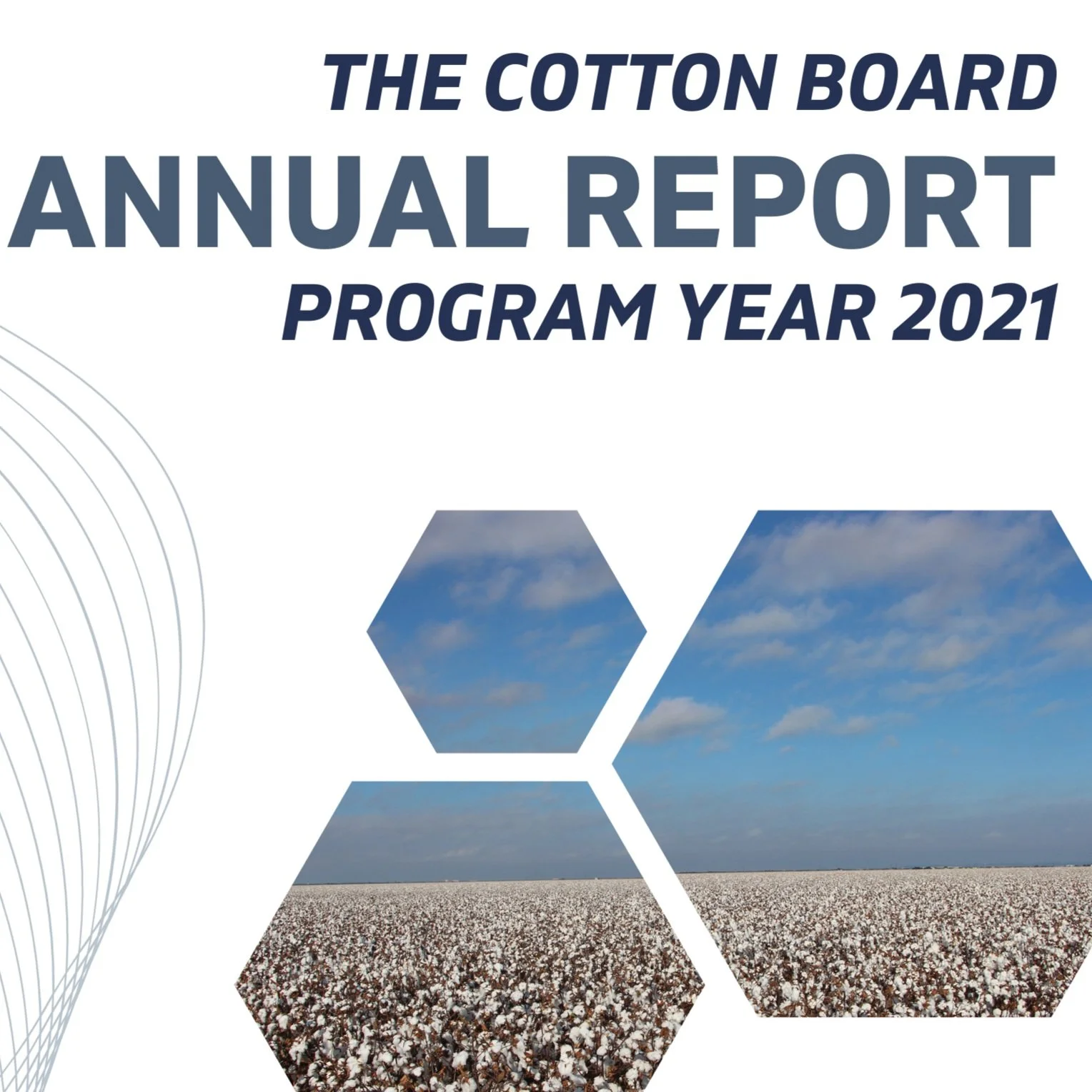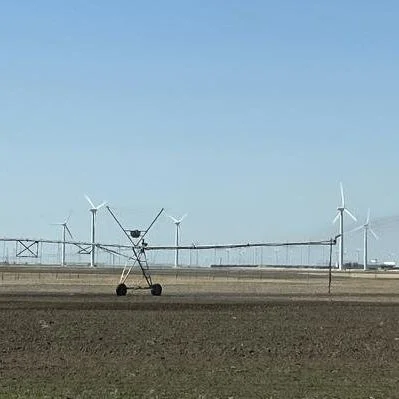This annual report covers the 2021 calendar and fiscal year for The Cotton Board, the oversight and administrative arm of the Cotton Research and Promotion Program (the Program). The objectives of the Program are to strengthen cotton’s competitive position and to maintain and expand domestic and foreign markets and uses for cotton by developing, funding, and implementing a coordinated plan of research and promotion.
Read MoreA punishing drought in Texas could be a boon for cotton farmers in Louisiana and Mississippi, helping fuel a rebound in the fluffy fiber after historic lows in the previous two years.
The dry spell affecting much of the West has wiped out hundreds of thousands of acres of cotton in Texas, by far the nation's biggest producer.
Read MoreThe Cotton Board recently held its 2022 Annual Meeting in Scottsdale, Arizona along with Cotton Incorporated’s Board of Directors. During this meeting, board members serving the Cotton Research and Promotion Program reviewed, analyzed, and voted to recommend Cotton Incorporated’s 2023 budget of $87 million to the Secretary of Agriculture. This budget recommendation reflects a $5 million increase from 2022.
Read MoreAs we approach late into the summer, we should be on the lookout for late-season lepidopteran pests of soybean. Soybean loopers can build large populations in a short amount of time and can be exaggerated by the use of broad-spectrum insecticides for stink bugs and three-cornered alfalfa hoppers.
Read MoreCottonseed oil is a pretty common ingredient in processed foods — chips, crackers, snack cakes. It is also famously used to fry those beloved Café du Monde beignets that New Orleans visitors eagerly line up for.
Read MoreThe 2022/23 U.S. corn outlook for this month calls for lower supplies, reduced feed and residual use, slightly higher food, seed, and industrial use, smaller exports, and lower ending stocks. Projected beginning stocks for 2022/23 are 20 million bushels higher based on a lower use forecast for 2021/22, where a reduction in corn used for ethanol is partially offset by greater use for glucose and dextrose.
Read MoreLouisiana corn for grain production is forecast at 84.9 million bushels, down 18 percent from 2021. Based on conditions as of August 1, yield is expected to average 175 bushels per acre, down 8 bushels from last year. Producers expect to harvest 485,000 acres of corn for grain, down 80,000 acres from 2021.
Read MoreAs Louisiana cotton producers move into cotton harvest season, Louisianians will see an influx of used and custom cotton harvest equipment moving into and through the state. With this introduction of equipment into the environment, the Louisiana Department of Agriculture and Forestry (LDAF) must implement restrictions to protect our cotton producers by preventing the introduction of boll weevils.
Read MoreKater Hake, vice president of Agricultural and Environmental Research with Cotton Incorporated, plans to retire by the end of the year. Hake was honored for his many contributions to the cotton industry at the recent Southern Cotton Ginners Association summer meeting.
Read MoreSpot quotations were 37 points higher than the previous week, according to the USDA, Agricultural Marketing Service’s Cotton and Tobacco Program. Quotations for the base quality of cotton (color 41, leaf 4, staple 34, mike 35-36 and 43-49, strength 27.0-28.9, and uniformity 81.0-81.9) in the seven designated markets averaged 104.41 cents per pound for the week ending Thursday, July 28, 2022.
Read MoreIn the Southeastern states of the Cotton Belt, target spot and areolate mildew rise to the top of the list of troublesome cotton foliar diseases. Knowing that these two diseases pose a high risk of negative effects later in cotton’s growing season, Cotton Incorporated has teamed up with the University of Georgia to fund research on how to identify and manage these issues.
Read MoreHow will this year’s weather conditions affect crop production? The Monthly Agricultural Yield Survey conducted by the U.S. Department of Agriculture’s National Agricultural Statistics Service (NASS) will survey U.S. farmers beginning July 30, 2022, regarding yields of the major row crops throughout the growing season across the United States.
Read MoreU.S. cotton growers pressed by drought are expected to abandon almost a third of planted acres against a backdrop of collapsing prices that are causing a bit of head scratching, Scott Stiles, extension economist for the University of Arkansas System Division of Agriculture, said on Wednesday.
Read MoreIf you want to honor a cotton consultant, nominate him or her for the prestigious 2022 Cotton Consultant of the Year (CCOY) Award.
Read MoreThis month’s 2022/23 U.S. corn outlook is for larger supplies and higher ending stocks. Corn beginning stocks are raised 25 million bushels, based on reduced feed and residual use for 2021/22 as indicated in the June 30th Grain Stocks report.
Read More














